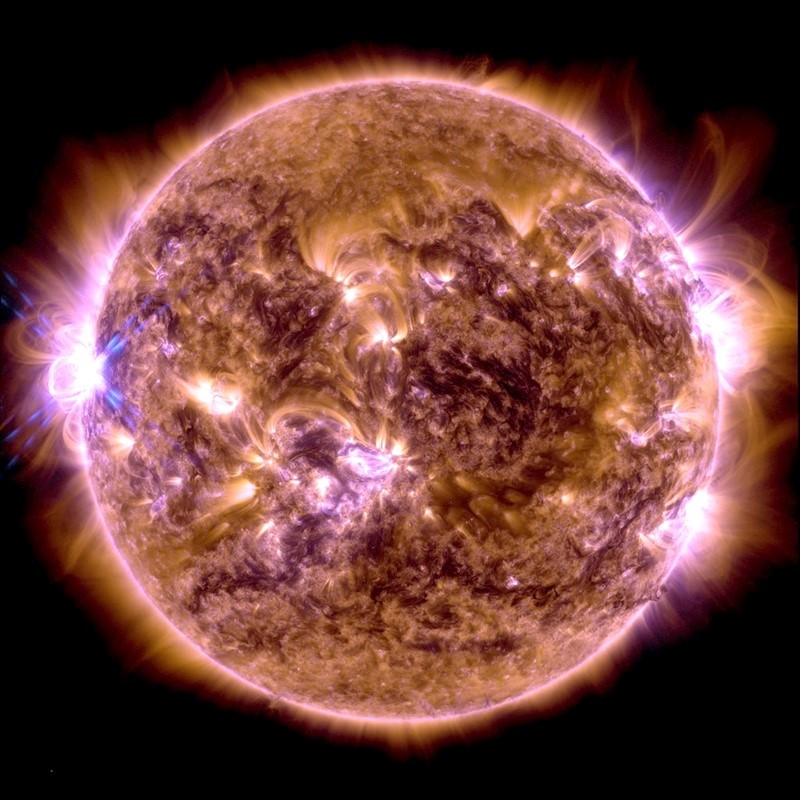Description

Disclaimer: Copyright infringement not intended.
Context
A new visualization from the European Space Agency (ESA) shows activity ramping up on the sun's surface as it approaches solar maximum this year.
Details
Solar maximum
- Solar maximum is a phase within the 11-year solar cycle when the Sun's activity, particularly sunspots and solar flares, reaches its peak.
- Currently, we are in solar cycle 25, which is expected to peak in mid- to late 2024 — one year earlier than previous estimates. The most recent solar minimum, when the sun is least active, occurred in December 2019, just two months before Solar Orbiter launched.
11-Year Cycle:
- The solar cycle, also known as the sunspot cycle or Schwabe cycle, lasts approximately 11 years on average. It consists of alternating periods of high and low solar activity.
Sunspots:
- Sunspots are temporary phenomena on the Sun's photosphere that appear as dark spots compared to surrounding areas. During solar maximum, the number of sunspots increases significantly, reaching a peak.

Solar Flares and Coronal Mass Ejections (CMEs):
- Solar maximum is also associated with an increase in solar flares and coronal mass ejections. These are powerful bursts of energy and matter released from the Sun's surface into space.
Impact on Earth:
- Solar activity during the maximum phase can have various effects on Earth. Intense solar flares and CMEs can lead to geomagnetic storms, which may disrupt satellite communications, power grids, and navigation systems. In some cases, cause radio blackouts.
Auroras:
- One of the most visually stunning effects of solar maximum is the increase in auroras, particularly the aurora borealis (Northern Lights) and aurora australis (Southern Lights). These colorful displays occur when charged particles from the Sun interact with Earth's magnetic field.
Solar Radiation:
- During solar maximum, the Sun emits more radiation across the electromagnetic spectrum, including ultraviolet (UV) and X-ray radiation. This can impact the upper atmosphere and ionosphere, affecting radio communications and the behavior of satellites in orbit.

Space Weather Forecasting:
- Understanding solar maximum and its effects is crucial for space weather forecasting. Scientists monitor solar activity using telescopes and satellites to predict potential impacts on Earth and space-based technologies.
Scientific Research:
- Solar maximum provides researchers with a valuable opportunity to study the Sun's behavior and its influence on space weather. Observations during this phase contribute to our understanding of solar physics and help improve predictive models.
|
PRACTICE QUESTION
If a major solar storm (solar flare) reaches the Earth, which of the following are the possible effects on the Earth ?
- GPS and navigation systems could fail.
- Tsunamis could occur at equatorial regions.
- Power grids could be damaged.
- Intense auroras could occur over much of the Earth.
- Forest fires could take place over much of the planet.
- Orbits of the satellites could be disturbed.
- Shortwave radio communication of the aircraft flying over polar regions could be interrupted.
Select the correct answer using the code given below:
- 1, 2, 4 and 5 only
- 2, 3, 5, 6 and 7 only
- 1, 3, 4, 6 and 7 only
- 1, 2, 3, 4, 5, 6 and 7
Answer 3
|












